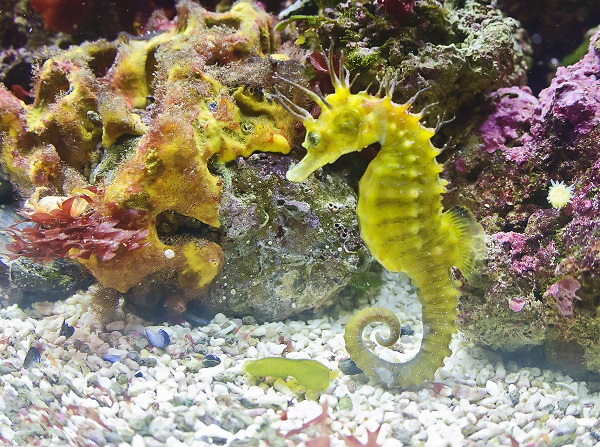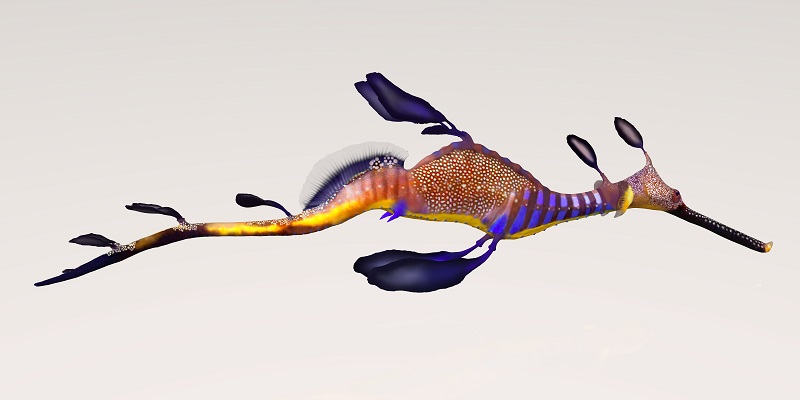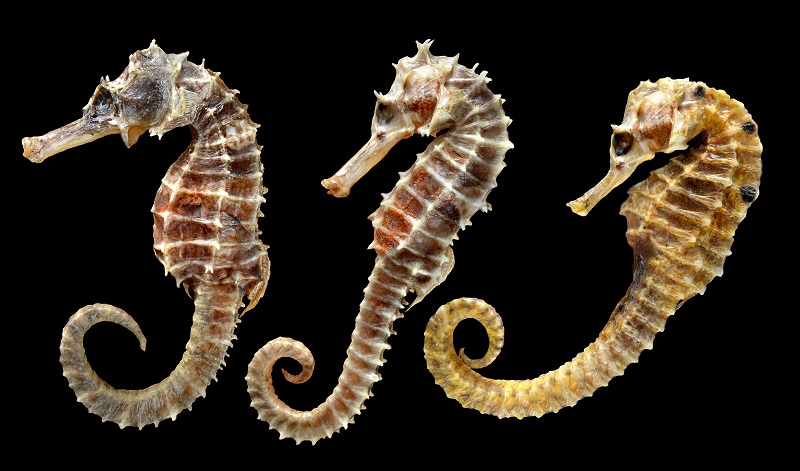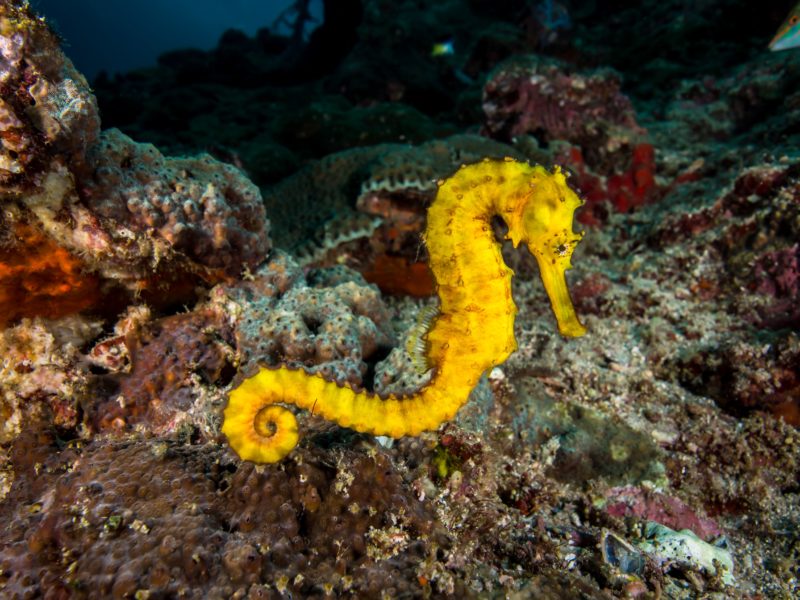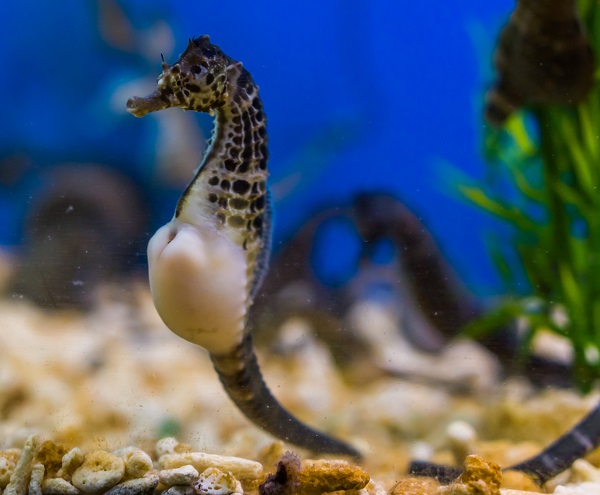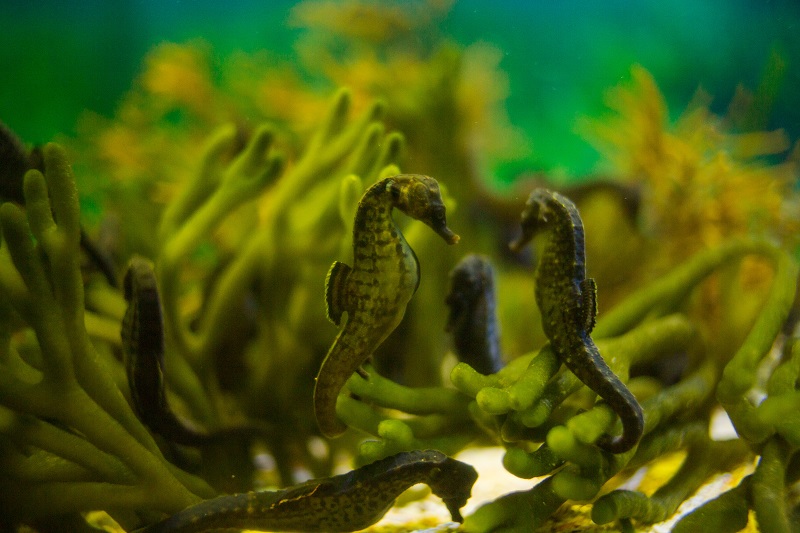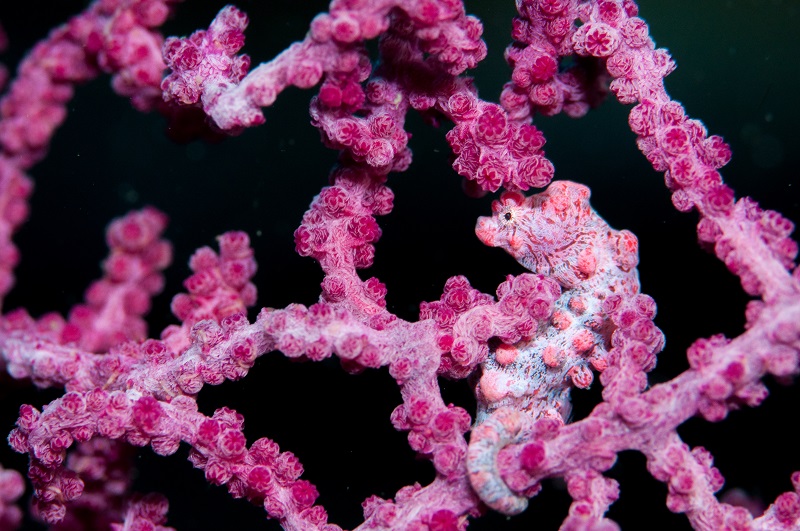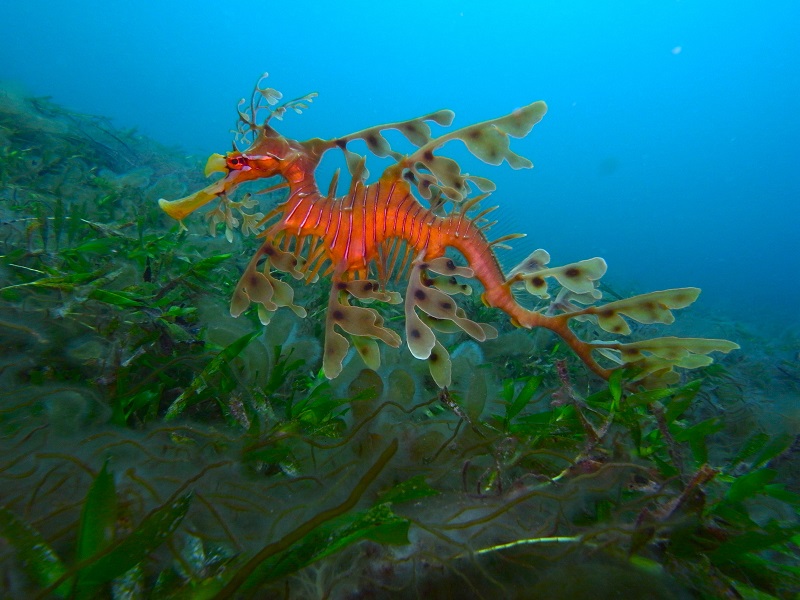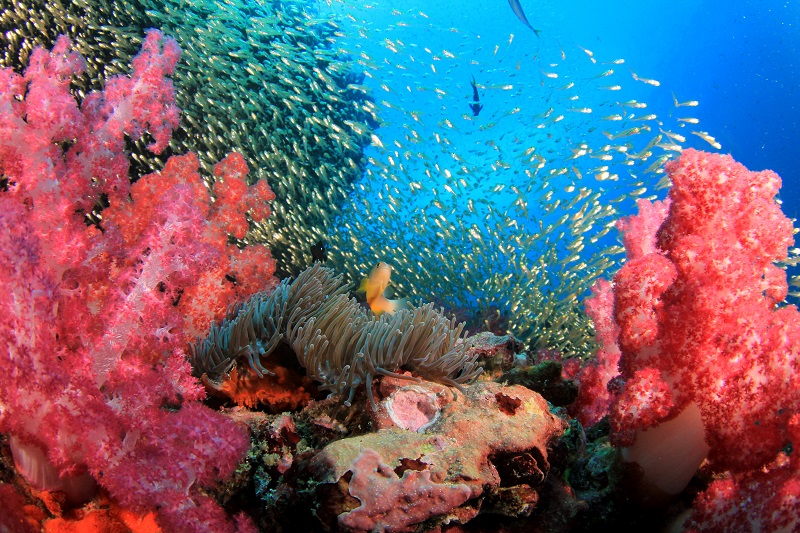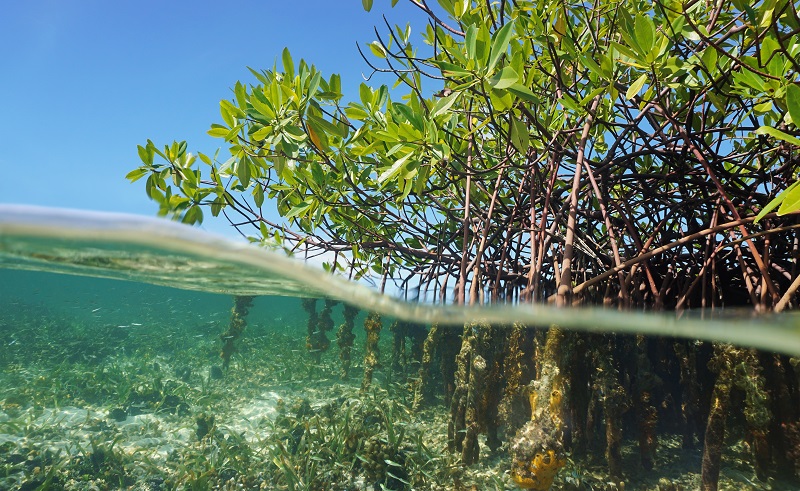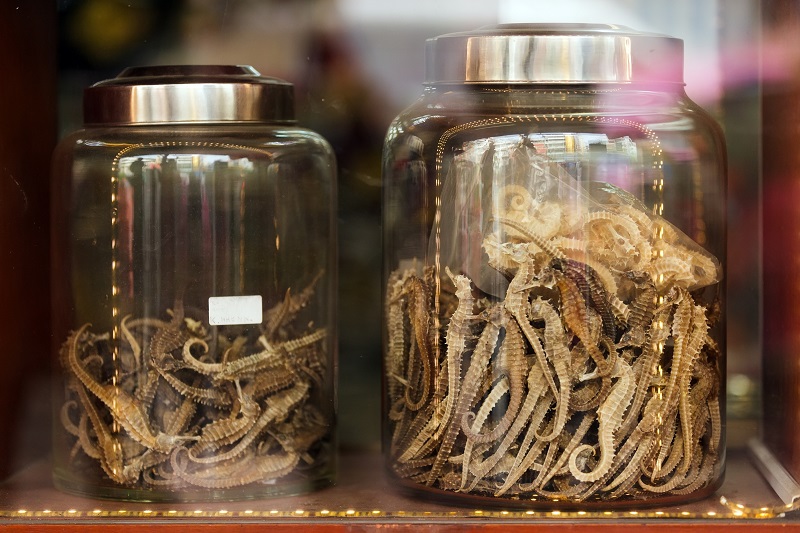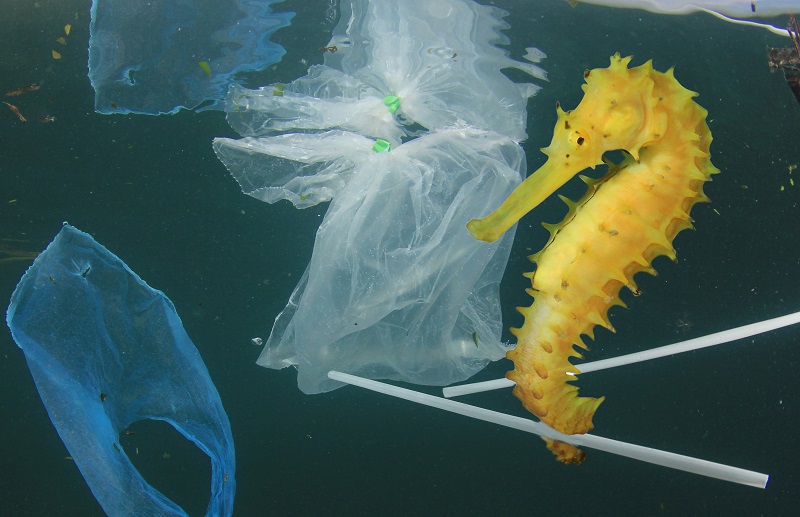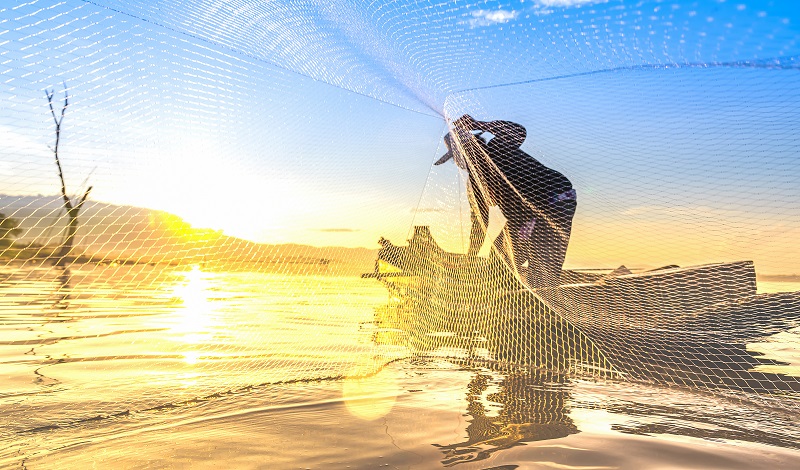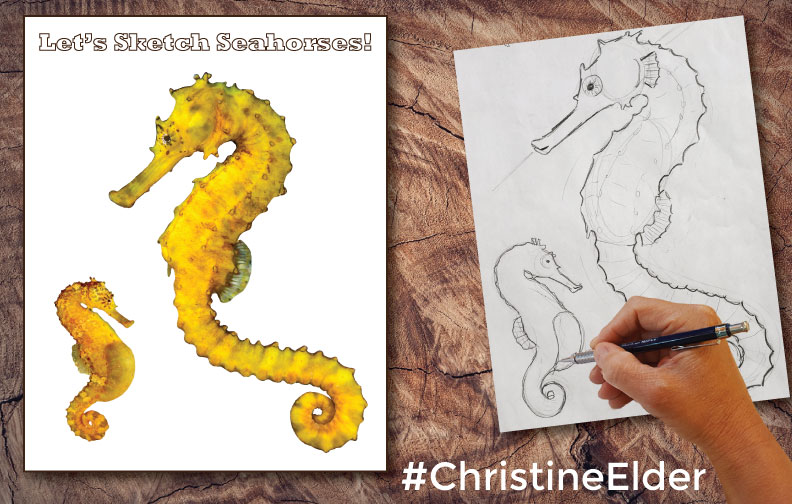What’s So Special About Seahorses?
With the head of a horse, the eyes of a chameleon and the tail of a monkey, it’s no wonder seahorses have captured our imagination for millennia.
Cultures have memorialized them worldwide, from 8,000-year-old cave paintings in Australia to Greek and Roman depictions of them on tombs and coins, pulling the chariots of Poseidon and Neptune.
Their delicate beauty and nearly comical demeanor have inspired creators to feature their likenesses in books, movies, toys, games, décor, and jewelry.
We’re fascinated by their unique courtship rituals in which the male uniquely carries the eggs in a true pregnancy, a duty otherwise reserved for the female of a species in virtually all other animals on earth.
Despite our adoration of them, many species of seahorses are endangered with extinction in the wild.
How Seahorses are Different from Other Fish
Like other fish, they live in water, breath with their gills, use a swim bladder to help with buoyancy and have fins for swimming.
That’s about where the similarities end.
Unlike the rest of the fish world, seahorses have some unique characteristics including:
• A horse-shaped head with a flexible neck that allows them to turn their heads and look around in a manner that reminds one of a prancing horse.
• Their mouth is elongated into a toothless, jawless snout which they work like a soda straw, designed to vacuum up tiny plankton and shrimp from rocky crevices.
• Lacking a stomach for storing food, they must eat constantly to avoid starvation.
• Captive seahorses have been observed to inhale brine shrimp at a rate of 3,000 per day!
• Their eyes are similar in structure to chameleons since they can rotate each independently in their sockets.
• Their body is covered in a series of firm yet flexible interlocking plates covered by skin. They lack the scales that other fish possess.
• They swim upright (though poorly) propelled forward by their dorsal fin (instead of their tail) that beats up to 70 times per second!
• Their tail is prehensile, like a monkey’s, used not to swim but to wrap around things like coral or seagrass to keep them from being swept away by ocean currents. They also use their tails during courtship, wrapping around their partner as they perform a floating dance that can last for hours.
• Males carry the offspring in a true pregnancy unlike any other fish (or animal for that matter!)
Love Life of Seahorses
If there’s one thing that everyone knows about seahorses, it’s that the male is the one who gives birth. But other aspects of their love life are equally fascinating.
A pair of seahorses usually spend their entire short life together in a monogamous relationship living in one small home range.
The male seahorse is easily distinguished from the female because he has an obvious brood pouch that makes him look fatter than the female, even when he’s not pregnant.
During mating season, which may last all year in some parts of the world, the male and female unite each morning for a ritualized greeting. The female produces several hundred eggs which she inserts into the males’ brood pouch where they embed in a placenta-like structure for several weeks. When the time is right, the male will go through a day-long labor in which the now fully formed seahorse fry and ejected from his pouch. Fry are born with a yolk sac which serves to nourish them as they float in the water column for several weeks until eventually settling to the seafloor to find a territory of their own.
Seahorse Diversity
How many species of seahorses are there? That answer depends upon who you talk to. Scientists have discovered and named about 45 species as of 2019, but there could be over 100 species yet to be found since they are so small and elusive.
Marine biologists use the following characteristics to help identify the various species of seahorses.
• Size; which ranges from 1” pygmy seahorses to foot-long big-bellied seahorses.
• Shape; which can vary from tall and thin to short and squat.
• Color; which can vary from dull to bright, with most species being able to change their color at will in order to camouflage themselves from predators or communicate during courtship. Many species closely match the colors of their habitats from yellow and pink corals to green seagrass beds and tan sandy sea floors.
• Adornments; which include the number, size, and shape of the spines and ridges along the seahorse’s body.
Who are Seahorses Related to?
Seahorses belong to the family Syngnathidae, which is a Greek name meaning ‘fused’ jaw’ which refers to the shape of their tubular snout.
The family includes the closely related pipefishes and seadragons who differ from the seahorses we’re familiar with in lacking the prehensile tail.
They are more distantly related to trumpetfishes and cornetfishes, which are also long fish with tubular snouts found in coral reefs.
Where Do Seahorses Live?
Surprisingly, seahorses live in many of the world’s seas, farther north and south than one would guess. They not only live in the proverbial tropical coral reefs of the South Pacific and the Caribbean, but certain species inhabit countries ranging from Albania to Yemen. Many are found in temperate seas all the way north along the coasts of the Atlantic from the United Kingdom to South Africa, Maine to Argentina. In the Pacific Ocean, species are found from Washington State to Peru, and Japan to New Zealand.
Seahorse diversity reaches its highest numbers in Japan, Australia, Indonesia, Malaysia, Viet Nam, Thailand, and the Philippines, each of which has over 5 species and perhaps many more yet to be discovered.
Habitats of Seahorses
Seahorses are found in a wide range of shallow water and coastal habitats including seagrass beds, mangroves, estuaries, and coral reefs.
Are Seahorses Endangered?
Many seahorse species are facing threats to their survival that could lead to extinction.
In a way, seahorses are the proverbial ‘canary in the coal mine’ in that their decline is a symptom of the widespread pollution, rampant overfishing, global climate change, and human greed that may lead to our demise as well.
Twelve seahorse species are currently listed as threatened on the IUCN Red List of Threatened Species.
- An estimated 150 million seahorses a year are killed for the traditional Chinese medicine trade as of 2020 (see reference here.)
- More than one million more are collected to be dried and sold as mementos and another million are caught for the aquarium trade.
Why Seahorses Are Vulnerable to Extinction
Seahorses have many traits that make them more susceptible to extinction. Most live in nearshore habitats that expose them to being killed by fisherman as bycatch, especially since they tend to grab onto fishing lines and crab traps. The shallow water makes it easier for collectors to capture them for the aquarium, curios and Chinese medicine trade.
Since many species live near the shore, they are impacted by pollution runoff from land and by development projects for resorts, towns, and industries.
Each seahorse pair has a very small home range so if one member of the pair is captured, the other is often left without a lifelong mate.
Their beauty is sadly their worst trait leading to their extinction. We are loving them to death. We want to watch them swim in our aquariums. We want to remember our trip to the beach with a bowl of decorative corals, seashells and, tragically, dried seahorse skeletons. And millions of people in Asia wrongly believe that eating seahorses can cure their ills and increase their fertility, a practice that is as false and wrong-headed as dining on pulverized rhinoceros horn and pangolin meat.
What Can Be Done To Save Seahorses?
- Spread the word about seahorse conservation by sharing this story.
- Cut down on seafood consumption, especially shrimp; whose capture methods kill many types of marine life in their bycatch. Learn more about sustainable seafood choices on the Seafood Watch website.
- Volunteer for ocean education coastal cleanup events such as those for World Oceans Day.
- Don’t buy live seahorses for your marine aquarium or dead ones in curio shops.
- If you SCUBA dive or snorkel in seahorse habitats, take care not to damage the habitat with your fins. You can also help monitor seahorse populations in the wild by logging your observations into an app like iSeahorse, iNaturalist, or Project Noah.
- Monitor businesses in your region for selling seahorse products and contact your political representatives to support legislation against this practice.
- Donate to marine and seahorse conservation organizations like those listed below.
Learn More About Seahorses
- Seahorses: A Life-size Guide to Every Species by Sara Lourie
- Save Our Seahorses and the International Seahorse Trust
- Project Seahorse
- Ocean Conservancy
- iSeahorse App
Learn to Draw a Seahorse
If you’d like to learn to draw a sketch of a seahorse, I invite you to check out my new online course, Discover Nature Sketching, where I share my best tips for learning to draw, which includes a special 30-minute video tutorial on sketching the seahorse you see below.
Videos About Seahorses
TED X Talk on the Pygmy Seahorse
Pygmy Seahorses: Masters of Camouflage | Deep Look
Did You Enjoy This Story?
If you’ve found value in this story and believe in my mission to educate youth and adults alike on the value of nature, I invite you to make a donation to help broaden and deepen the work I can accomplish.
Click the Paypal ‘Donate’ button below to donate any amount you wish to support the conservation and education work I do. You don’t need to have a Paypal account to donate, you may also choose to use a credit card, or simply put a check in the mailbox if you wish. Thank you!

